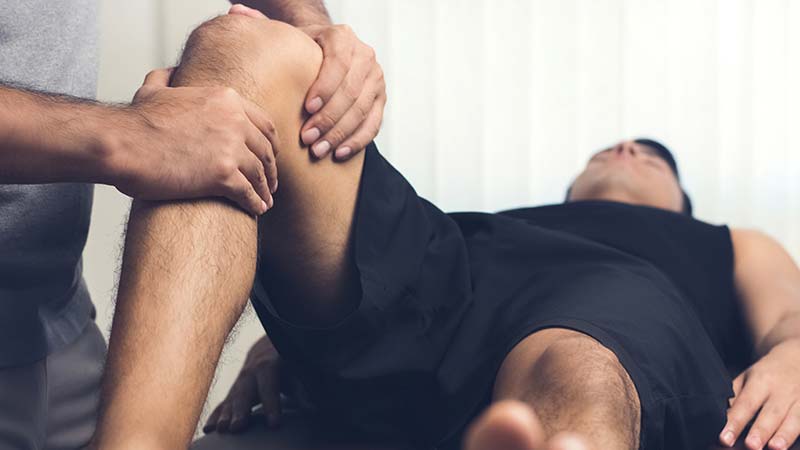
The answer to your health problems or chronic pain may be in your rearview mirror.
Imagine you’re leaving your physical therapist’s office. You feel much better, and there’s now a spring in your step. As you prepare to drive away, you realize the rearview mirror in your vehicle needs to be adjusted.
What does this say about your therapist?
The central role of most therapists is to provide some type of physical treatment intended to help improve the body’s mechanical balance.
The effects of a successful intervention can be significant. The better the treatment response, the more immediate and profound the effect. Posture and gait improve, and ranges of motion increase along with greater movement economy. Pain diminishes significantly.
A successful intervention also produces other easily measured changes such as greater spinal length, which increases your height — sometimes enough so that you may need to adjust your car mirror on the way out.
The benefits of improved muscle balance occur through slightly different pathways depending on the technique. For example, a Swedish massage can reduce the stress hormone cortisol. Cranial therapists work through the skull and temporomandibular joints, while those performing manipulation adjust spinal, foot and other joints. Most therapies that use muscle-testing are biofeedback-based, improving communication between the brain and muscles to re-establish proper balance.
There are hundreds of other types of remedies across the world provided by a multiplicity of professionals with an equal variation of educational degrees: physical therapists, osteopaths, acupuncturists, massage therapists, chiropractors, and many others.
Some approaches even incorporate several assessment and treatment tools into one organized approach, influencing neuromuscular balance through diet and nutrition, exercise, and mental-emotional factors. Chinese medicine, for example, uses acupuncture, color and music therapy, skeletal and muscular manipulation, diet and herbs, mental-emotional interventions, and exercise.
In general, it’s not so much that different therapies provide different benefits, or that one approach is better than another. The most important factor is the expertise and experience of the practitioner, especially in their ability to first assess the body and differentiate primary causes from secondary symptoms. Important assessment tools include obtaining a detailed health and fitness history (such as the MAF app), along with a physical examination that includes posture, gait and muscle testing.
While there are hundreds of named therapies, with many different theories and philosophies, their remedies primarily come down to improving brain and neuromuscular balance. When this happens successfully, we literally get taller — and the old rearview mirror position has to change.
Why do problems return?
Here are some important factors:
- Treating symptoms. Treating secondary problems that are not the main source(s) of the issue, which may be elsewhere.
- Excess stress. This can be in physical, biochemical, or mental-emotional forms, especially the accumulation of various stresses. This is typically associated with increased cortisol. Poor recovery from exercise is a common problem, too.
- Bad food. Primarily this is associated with the production of inflammatory chemicals throughout the body, which can affect the joints, trigger muscle imbalance, soft tissue impairment, gait irregularity, and other problems. Immune and gut stress are common results from poor food choices too, along with brain dysfunction, not to mention muscles themselves.
- No sunshine. Reduced sun exposure can lead to low levels of vitamin D, a very common problem impairing muscle, bone, joint and other physical structures.
Hands-on care has many valuable health and fitness benefits which are improved more with matching lifestyle recommendations — especially food and exercise. And the next time you get treated, see if your mirror needs adjusting when you get into your car.
Any Questions?
“Choosing Wisely,” a group of about 80 medical society partners, along with consumer groups, published a list of more than 500 common recommendations of unnecessary tests and treatments. In the U.S. alone, they estimate $750 billion annually is wasted on unnecessary assessment and treatment costs.
Here are some examples of what to question about your care when in physical pain:
- Low back/lumbar supports or braces may not be effective for the long-term treatment or prevention of pain. For example, braces can cause muscle weakness, worsening long-term outcome. (Low back pain is the fifth most common reason for all physician visits.)
- X-rays for patients with acute low-back pain during the six weeks after onset are usually not recommended. Studies show the use of X-rays in the care of low-back pain may result in worse outcomes than without their use. Exceptions might include those with a history of cancer, suspected fracture based on clinical history, progressive neurologic symptoms, osteoporosis, spondyloarthritis and tumors. The decision to perform X-ray evaluation should be made after performing a thorough history and physical examination.
- Chronic pain is often associated with an imbalance of inflammatory and anti-inflammatory chemicals, made worse by sugar and refined carbohydrates, and bad dietary fats. [LINKS] Patients with chronic pain often have significant depression and/or anxiety that should be addressed through nutritional and/or psychological means. Never choose opioids or narcotics as the first choice of treatment for neuropathic pain.








